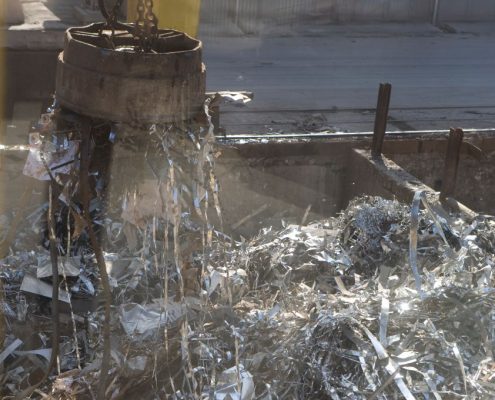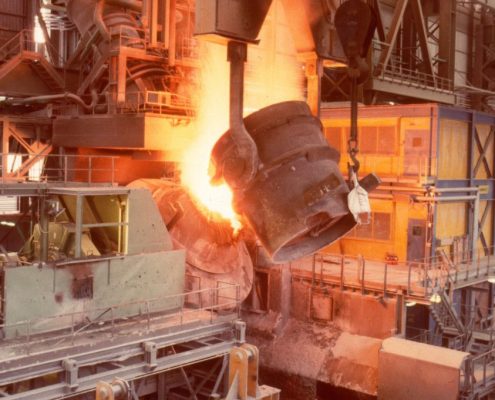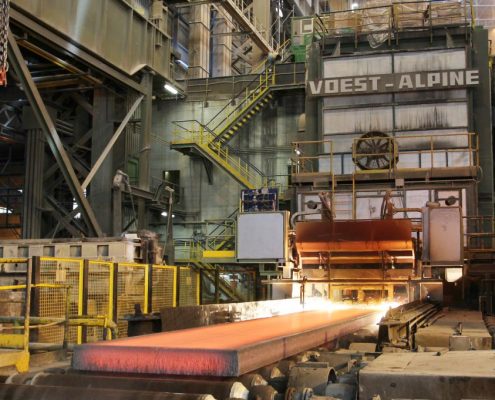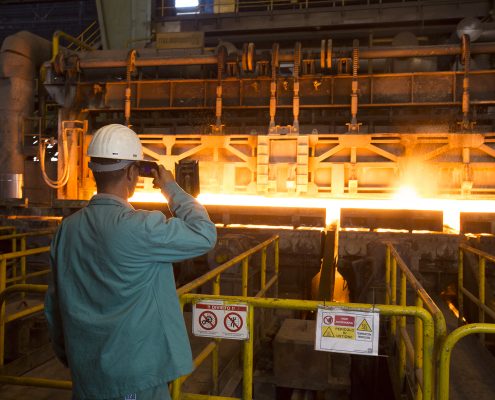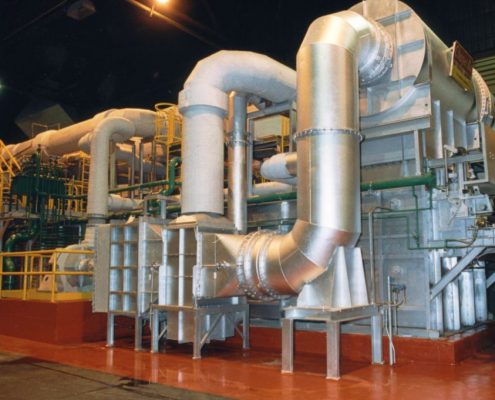LOADING IRON ALLOY SCRAP AND MELTING STEEL IN ELECTRIC FURNACES
The end product is conceived in the steelworks by melting iron scrap and adding raw materials
The aim is to introduce the solid load of the basket in the quantity and quality required, based on the type of steel being manufactured. The material (scrap and ferroalloys) selected, based on its composition, must have limited dimensions, thus making the melting process easier and avoiding damage to the furnace. The preparation of the baskets is done according to the operational load time during which it is possible to estimate the composition that can be obtained at spilling.
In this phase, the load is transformed from a solid state to a liquid state by means of an electric arc and gaseous oxygen. Through the melting programmer and electrode regulator, the current passed in the electrodes lowered near the metal load determines the arc* which melts the scrap.
In an advanced melting (refining) phase, reducing materials required are added and oxygen is blown in, which mainly oxidizes the chromium, carbon and silicon and raises the temperature of the pool in order to melt the metal load completely. In the final stages, slag is drawn off. Once melting has been completed, tapping is performed and the chemical composition of the metal pool is checked.
*electrical discharge
ANNEALING AND PICKLING
The pickling and annealing process of the hot strips consists of three main phases:
- Annealing: This can be done in passive furnaces, bell ovens, and directly in line. The aim is to release the internal stresses of the structure created during hot rolling.
- Mechanical pickling: This is carried out with a sandblaster and afterwards, with abrasive brushes.
- Chemical pickling: This is done in tanks with acid solutions (H2SO4 + HF).



